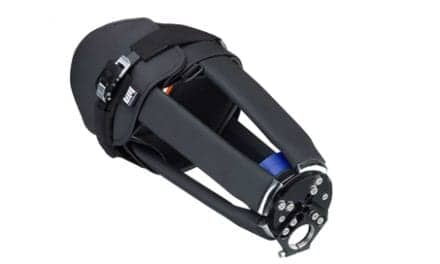10-06-2006
Manufacturers and suppliers of power wheelchairs assailed cuts of 21% to 41% in Medicare payments for power wheelchairs, saying the reductions would force suppliers out of business, cause lay-offs throughout the industry, and restrict access to mobility equipment for senior citizens and people living with disabilities.
The reimbursement cuts, announced by the Centers for Medicare & Medicaid Services (CMS), Washington, DC, hit particularly hard at the most sophisticated mobility equipment, which is needed by people with the most severe physical disabilities. For instance, a supplier who has been receiving a $6,500 reimbursement from Medicare for one such wheelchair will only receive $3,800 after the new pricing is effective November 15.
“The problem that CMS doesn’t understand is that we don’t have anything to cut,” says Carol Gilligan, president of Health Aide, Cleveland. “At these reduced rates, the cost of acquiring a wheelchair, fitting the patient, servicing the chair and doing the documentation paper work will exceed the amount that Medicare will pay for the chair. We can’t stay in business operating in the red. Patients are not going to have outlets to get the mobility equipment that they need.”
Industry officials say the underlying problem is that as the American society ages, there has been a significant increase in demand for power wheelchairs and scooters by a population that wants to remain as independent and as mobile as possible. CMS has reported a 2,700% increase in utilization over the past eight years. However, over the last 3 years CMS has responded to the increased demand for mobility equipment with a series of policy, rule and pricing changes that appear to be aimed at restricting beneficiary access to mobility equipment, crippling the industry that supplies it, and restraining costs.
“What we have is a regulatory body that has been focused on restricting access to the benefit,” said Scott Meuser, CEO of Pride USA. “Now, they have gone too far. The message from these price cuts is that CMS no longer wants the most physically disabled person in our society to have access to a power wheelchair through Medicare that will help him or her perform essential daily activities, such as grooming, preparing food and going to the bathroom. Medicare is turning their backs on the people who need help the most.”
Meuser maintained that Congress and the Administration will hear strong protests from advocates for people with disabilities, as well as clinicians and physicians.
“We expect serious access issues for consumers with severe disabilities, as well as seniors with mobility impairments,” says Mal Mixon, chairman and CEO of Invacare Corp. “We have an Americans with Disabilities Act that is supposed to ensure the highest quality of life possible for people living with disabilities. Yet, this Administration’s payment policy for power wheelchairs will effectively prevent people with disabilities from being able to obtain the power wheelchair they need to get around in their homes, as well as in their communities.”
Moreover, stakeholders say that CMS has taken a very shortsighted view because Medicare beneficiaries with power mobility equipment save the Medicare system millions of dollars because they require less homecare, hospitalization and emergency treatment from falls, and fall related injuries. Studies show that people living with physical impairments who do not have power wheelchairs cost the Medicare system an average of $14,000 more per person than those with a power wheelchair or scooter.
The most immediate impact from the new pricing schedule will be felt by people like Paul Bergantino, president of ATG Connecticut Rehab, Newington, Conn.
Bergantino has been supplying power wheelchairs for 16 years. But now he worries not only about whether his business can continue, but how senior citizens and people living with disabilities in his community will get access to power wheelchairs.
“Clearly, CMS does not understand the human side of this issue,” Bergantino says. “Our business is about providing a high level of skilled care to those in society whom require power mobility and other assistive technologies. There is a cost to providing such a complex product, evaluations, fittings, technical service, and in documenting it all in a highly compliant manner. Nevertheless, we love our patients and the outcome of our work. The really sad thing is this: we likely won’t be here to give them that level of care. Medicare has abandoned them.”
[SOURCE: Frisby & Associates Inc, October 6, 2006]
The new PMD codes, fee schedule amounts, and LCDs were originally scheduled to take effect October 1, 2006. In order to allow for additional time to prepare for implementation of the fee schedule amounts and LCDs, these changes will be effective November 15, 2006. The 2006 PMD fee schedule ceiling and floor amounts have been calculated and are listed below.
HCPCS = Healthcare Common Procedure Coding System Code; NU = Purchase New; RR = Rental; UE = Purchase Used; KF = Class III Item
HCPCS Modifier 1 Modifier 2 Ceiling Floor
K0800 NU $1,292.77 $1,098.85
K0800 RR 129.28 109.89
K0800 UE 969.58 824.14
K0801 NU 2,084.22 1,771.59
K0801 RR 208.40 177.14
K0801 UE 1,563.15 1,328.68
K0802 NU 2,358.66 2,004.86
K0802 RR 235.86 200.48
K0802 UE 1,769.01 1,503.66
K0806 NU 1,563.91 1,329.32
K0806 RR 156.39 132.93
K0806 UE 1,172.93 996.99
K0807 NU 2,373.05 2,017.09
K0807 RR 237.30 201.71
K0807 UE 1,779.80 1,512.83
K0808 NU 3,671.60 3,120.86
K0808 RR 367.150 312.08
K0808 UE 2,753.69 2,340.64
K0813 RR 232.09 197.28
K0814 RR 311.32 264.62
K0815 RR 314.77 267.55
K0816 RR 321.45 273.23
K0820 RR 264.40 224.74
K0821 RR 318.21 270.48
K0822 RR 395.31 336.01
K0823 RR 362.68 308.28
K0824 RR 463.61 394.07
K0825 RR 385.05 327.29
K0826 RR 589.91 501.42
K0827 RR 511.10 434.44
K0828 RR 661.92 562.63
K0830 RR 479.45 407.53
K0831 RR 452.64 384.74
K0835 RR 400.07 340.06
K0836 RR 395.13 335.86
K0837 RR 460.68 391.58
K0838 RR 394.74 335.53
K0840 RR 845.90 719.02
K0841 RR 482.85 410.42
K0842 RR 482.85 410.42
K0843 RR 514.36 437.21
K0848 RR 375.17 318.89
K0849 RR 372.15 316.33
K0850 RR 432.22 367.39
K0851 RR 470.27 399.73
K0852 RR 721.37 613.16
K0853 RR 706.47 600.50
K0854 RR 698.25 593.51
K0856 RR 380.02 323.02
K0857 RR 423.72 360.16
K0858 RR 414.60 352.41
K0860 RR 979.25 832.36
K0861 RR KF 598.72 508.91
K0861 RR 553.83 470.76
K0862 RR 596.86 507.33
K0868 RR 455.73 387.37
K0869 RR 455.73 387.37
K0877 RR 400.27 340.23
K0879 RR 540.55 459.47
K0880 RR 845.90 719.02
K0884 RR 611.08 519.42
K0885 RR 603.90 513.32
K0886 RR 557.75 474.09
K0890 RR 919.75 781.79
K0891 RR 1,218.04 1,035.33
The fee schedule amounts for all States is available in a public use file at: http://www.cms.hhs.gov/DMEPOSFeeSched/LSDMEPOSFEE/list.asp
[SOURCE: CMS, October 2006]




